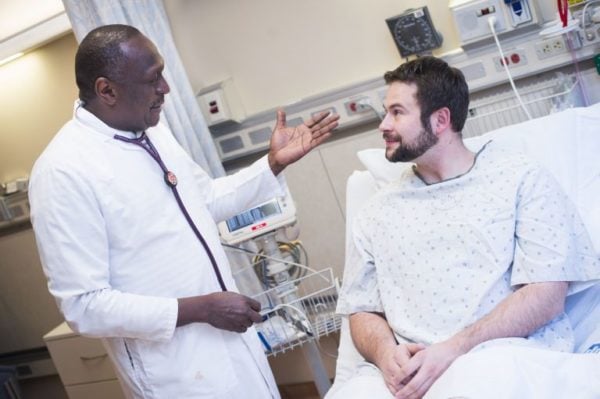Hopkins lab develops arrhythmia treatment

In the last few decades, medicine has become increasingly tailored toward a patients’ specific needs; personalized medicine is quickly taking over the old practice of universal treatments for an ailment. The Computational Cardiology Laboratory at Hopkins, headed by Natalia Trayanova, sits right in the niche of this new, vast world of personalized medicine.
At the Computational Cardiology Laboratory, Trayanova and her team of scientists and engineers have developed personalized 3D computational heart models. These are built from MRI images of real patients that reveal healthy and unhealthy heart tissue. But these aren’t just the average, stagnant 3D models; these computational models can show a heart in rhythm.
“We know how cells function in regions that are healthy and unhealthy; we input all these physics and biology equations that we know [about], and then we run it,” Trayanova said in an interview with The News-Letter. “By combining mathematical knowledge and the specific structure of a patient’s heart, the individual’s organ is studied in real time — which includes determining if it might fail.”
Much of the Computational Cardiology Laboratory is focused on arrhythmia, or an irregular heartbeat often correlated with aging.
“[Arrhythmia] is a huge burden on health care as the population ages; almost two percent of the population has it worldwide,” Trayanova explained.
In the same interview, Patrick Boyle, Trayanova’s coworker pointed other issues related to treating arrhythmia.
“The treatment options are really limited, and sometimes the success rates that are published for very common arrhythmias are from 20 to 40 percent,” Boyle said.
The current treatment is often the implantation of an Implantable Cardioverter Defibrillator (ICD).
An ICD monitors heart rhythm and delivers a shock if an abnormal rhythm is detected. But ICDs offer two clear dilemmas: They are often implanted in overly cautious people who don’t necessarily need them, and actually receiving a shock from an ICD is extremely painful, because it also shocks the surrounding organs.
Using the patient-specific computational heart models, physicians can better decide how at-risk a patient is for harmful arrhythmia and will only implant an ICD when it is absolutely necessary.
Another avenue of research at the Computational Cardiology Laboratory is optogenetics, Boyle’s focus. Optogenetics is a recent scientific advancement that uses light-sensitive proteins to stimulate a cell.
Theoretically, certain lights can provide the “shock” that allows the heart to regain its normal rhythm. This could solve the problem of the painful residual electric shock to organs other than the heart, as muscles not primed to be light-sensitive would not be affected.
Using the heart models developed at the lab, optogenetics can be theoretically applied to understand its viability as a replacement for direct electric shock.
Patient-specific heart models from the Computational Cardiology Lab have already seen their heyday in the clinical world, aiding physicians in ablation. Ablation is used to treat atrial fibrillation, a type of abnormal heartbeat, and is meant to incapacitate cells that cause abnormal rhythms.
Trayanova explained that, currently, finding areas for ablation has proven to be very difficult; it requires invasive procedures that only provide 2D images and relatively large target areas.
The 3D simulations can reveal specific locations without the initial invasive procedure. It is too soon to interpret the results, but pilot studies have been done on patients through the Johns Hopkins Hospital.
Boyle cites the hospital as a large reason why he decided to work at Hopkins.
“It was kind of a no-brainer… it’s an incredible place to do research. I came from a meeting this morning at the hospital with one of the preeminent cardiologists in the world… these people [clinicians] are heavy hitters, but they want to talk to you, they want to work with engineers, they want to be cutting edge,” Boyle said.
Trayanova also placed an emphasis on the collaboration between scientists, engineers and clinicians. She described a gap between basic research and the subsequent application by clinicians.
“We figured out that with our tools, we can basically make that jump ourselves,” Trayanova said. “We understand how the human heart functions, we might as well do it ourselves.”
That is the whole premise of the Computational Cardiology Laboratory: taking out the middle man by directly integrating engineering to provide diagnoses and treatments for individual patients.
In doing so, they hope that their current qualitative approach of medicine will be replaced by precise, quantitative descriptions of a patient’s needs.
Although the evolutionary lab is the first of its kind, both Trayanova and Boyle envision a future where engineering and medicine are practically synonymous.
“With so much streaming data being recorded and the whole machine learning, it’s going to change; what we’ll end up doing is we’ll be able to predict events before they occur. That’s the goal,” Trayanova said.
-Jaemie Bennett
This article first appeared on The Johns Hopkins News-Letter
